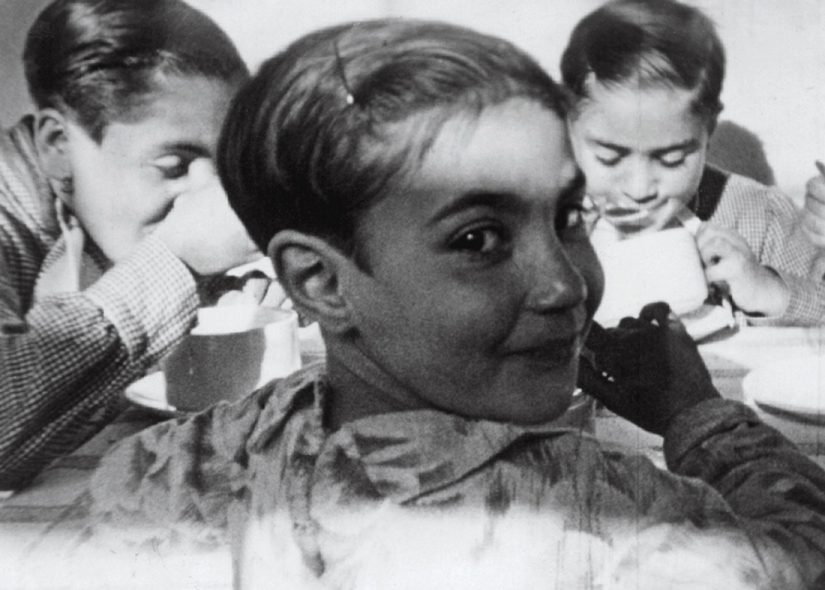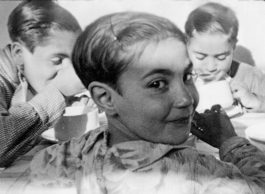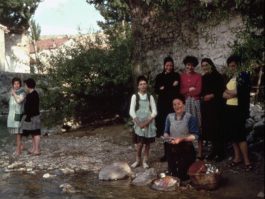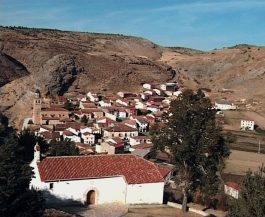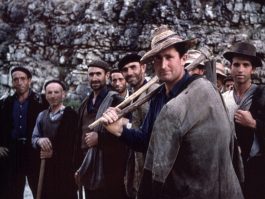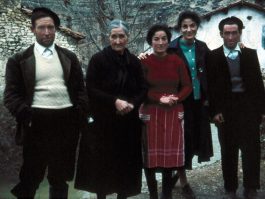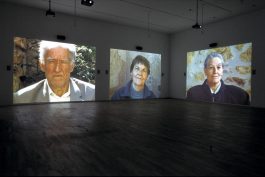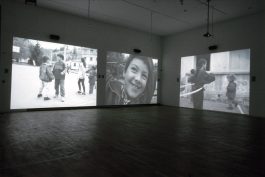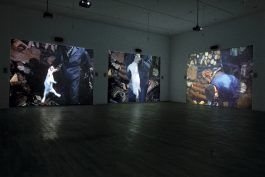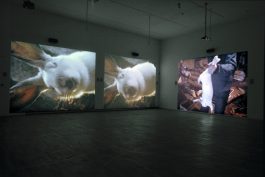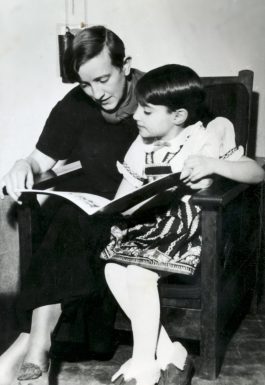Villar is based on an unusual story from the artist’s own family history. The family was split up during the Spanish Civil War and by chance reunited many years later. Briefly told, the story is that during their mother’s illness two of the children had to be placed in a children’s home for a period. Because of the war their mother was unable to bring them home, and when this became possible, the daughter, Cristobalina (who would later be the artist Eva Koch’s mother) had already ben adopted by a Norwegian relief worker. Christalobina subsequently married a Dane and did not see her Spanish family again until 1962, after a chance encounter on the Faroe Islands with a notary from the region near Villar del Cobo.
Villar is shown on 6 monumental interactive projections that allow the visitor to meet the story’s personalities and enter into the village of Villar del Cobo, where the story took its departure in 1934.
Crucial to the way in which one experiences the action and the structure of the installation is the interactivity that is triggered by the viewer. The way in which one meets the work can be compared with a traveller’s passage through a place. The viewer enters the village and meets its inhabitants, but only when one has decided to stop up for a while, that is, when one activates the installation’s sensors, do these people’s stories gradually open up. Because of the many layers and the variation with which they can be activated, the narrative will be unique for each visitor, just as it would be for each traveller who comes to a town. The installation consists of 20 different sequences, which last a total of 45 minutes, but they will never be unfolded chronologically or predictably, so that the experience of each visitor will be unique.
The installation switches between four different states, which are all triggered interactively.
The basic state is the passive installation, in which each projection shows the story of one of the 6 main characters.
Activation of a sensor placed in front of each projection triggers the intimate state, in which the activated person relates a short sequence, while the 5 others run on independently.
If more than two projections are activated at the same time, the special state is triggered and all 6 projections show synchronous scenes from the life of the family, and the viewer is in earnest invited into the family’s everyday life.
If one is not aware that the installation in interactive, one will often come to activate a centrally placed sensor, by which a general state shows synchronous sequences that are displayed simultaneously on all 6 projections. The general state gives an overall picture of the district and the village in Spain where the story is taking place.
Just as a tourist travelling through can obtain various impressions and experiences from places and episodes depending on how much time one spends and how close one chooses to approach the people one encounters there, so Villar will open up for the viewer depending on the extent to which one chooses to immerse oneself. By allowing different voices to tell about the same event, Villar is also about the fact that truth depends on the eyes that see, and that recollection is a subjective matter.
